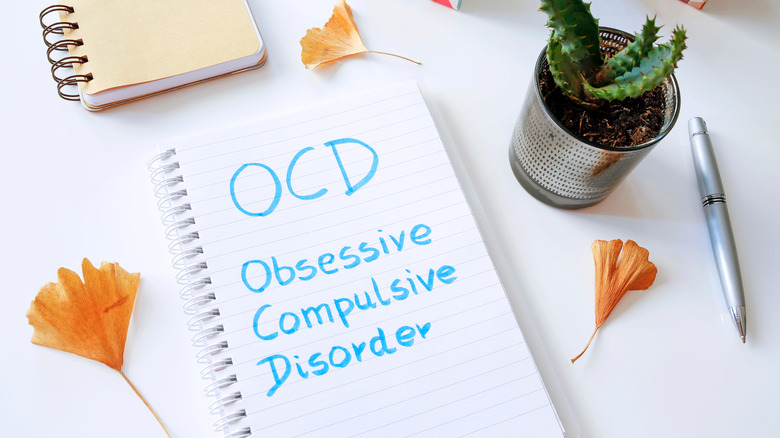How Is OCD Different From Generalized Anxiety?
In the course of your life, you will probably experience anxiety and worry. Eventually, these thoughts and feelings normally subside on their own, but for many people, anxiety is a daily struggle that doesn't go away with time. Persistent anxiety and worry can contribute to a variety of physical and psychological symptoms, such as nausea, hot flashes, panic attacks, rumination, dissociation, and fearing worst-case scenarios (per Mind). Someone who displays long-term anxiety symptoms could fit the criteria to be diagnosed with an anxiety disorder by a trained professional, such as a psychiatrist or psychologist.
Anxiety disorders can come in different forms. Generalized Anxiety Disorder (GAD) is one type that affects 6.8 million adults per year, according to the Anxiety & Depression Association of America. A complete description of this disorder can be found in the Diagnostic and Statistical Manual of Mental Disorders (DSM), which is published by the American Psychiatric Association (APA). The manual is periodically revised to reflect current research findings, and the APA notes that healthcare professionals commonly use it to diagnose patients with psychological disorders.
Obsessive-Compulsive Disorder (OCD) was in the anxiety disorders category in the previous DSM-IV, as shown in a table provided by the Substance Abuse and Mental Health Services Administration. It was moved to another category in the updated DSM-5, and the current classification of OCD falls under "Obsessive-Compulsive and Related Disorders." Although some symptoms of the disorder might resemble those of GAD, there are some important distinctions between the two.
Comparing Obsessive-Compulsive Disorder and Generalized Anxiety Disorder
Obsessive-Compulsive Disorder can occur alongside other disorders, such as generalized anxiety or depression. In an article published in Frontiers in Psychiatry, the comorbidity rates with other psychological disorders are estimated to range from 19% to 90%. Researchers report the presence of OCD may be higher in patients with bipolar disorder, and there may be genetic components at play.
People with OCD experience anxiety, but their behavior is driven by obsessions and compulsions. As described by the Mayo Clinic, these obsessions manifest as uncontrollable intrusive thoughts, images, or urges that evoke worry and anxiety. According to the clinic, individuals with OCD engage in repetitive "rituals," which can include constant checking, cleaning, or seeking reassurance in an attempt to ease their anxiety. However, the relief from anxiety is temporary and does not address the root of the behavior. In the DSM-5, obsession and compulsions are described as negatively impacting daily functioning while taking up considerable time (per Beyond OCD).
While people with Generalized Anxiety Disorder also experience anxiety and worry, they are not associated with one specific obsession or ritual. As a DSM-5 criterion, the Substance Abuse and Mental Health Services Administration shares that people with GAD feel constantly worried about many life experiences or events. Worry and anxiety must also persist for at least six months, while not linked to drug use or medical conditions. If you struggle with either of these conditions, a psychiatrist may be able to help you manage your symptoms.


